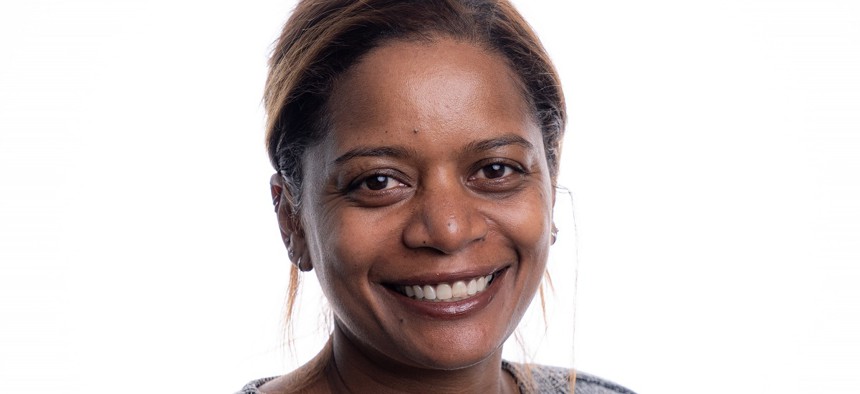Opinion
Opinion: Our mental health system fails too many kids
There are devoted, compassionate people at every level of the system who are ready for change, and concrete things we can do together starting in 2024 to help our most vulnerable.

Melanie Hartzog is the CEO of The New York Foundling. Image courtesy of The New York Foundling
There’s a middle-school-aged child with us at The New York Foundling. We’ll call them Alex here. Alex has been in our foster care programs for quite some time.
Alex has been diagnosed with several serious mental health disorders and right now is living in a treatment facility because their mental health needs couldn’t be met in a foster home.
Over the last several years, they have cycled through nearly every system and every level of care you can think of: therapeutic foster homes, child welfare and state mental health residential treatment facilities, and outpatient community services.
On paper, Alex has gotten an extraordinary level of care.
But in reality, it’s not working for them. Alex has had at least a dozen visits to psychiatric emergency rooms. We know that all that movement between services and providers actually makes it harder to deliver the kind of coordinated, consistent, and effective care kids need to stabilize and make progress.
Unfortunately, Alex isn’t alone. At The Foundling we support about 500 children in foster care, and thousands of families across our array of family and education services and through our health and behavioral health care.
For too many of them, and others all across the city, the system is broken.
The right care is out there – and often medical professionals can tell exactly what it is – but there are too many barriers to reach it.
Now, imagine if that very first doctor or social worker assessing Alex was able to help them access a more appropriate level of care instead of cycling them through one program after another, year after year. They wouldn’t have to wait for Alex to reach an arbitrary number of ER visits, or fail out of one setting, or be in extreme crisis to justify the right program, as they do now.
The amount of change it would take to realize that kind of experience feels daunting to a lot of us who work with children. There is no silver bullet to finding every child the combination of care they need.
But there are devoted, compassionate people at every level of the system who are ready for change. And there are concrete things we can do together starting in 2024 to help our most vulnerable kids live fuller, healthier, happier lives, and bring us closer to a system that works for them.
First, we need a lot more communication across the City, State and non-profit agencies that now operate in their own independent silos. Moving kids between them is painful and time-consuming. We need to start breaking down some of these barriers and bring stakeholders together to meet about complex cases. Some of that has recently begun – and now it’s time to make it standard practice for every child.
Next, we have to lift many of the limitations put in place by insurance, which not only worsens outcomes for kids but also leads to costly emergency care. Too often, insurance dictates the care we can provide, the progression of care children must move through, and how long they can be treated – often leading to children being prematurely discharged, and reentering the system through an ER. We need insurance companies to recognize the ultimate costs of these broken policies. We need them to not only build in greater flexibility so that those in our care get the treatment they need, but also for our service providers to be paid adequately for the services delivered.
Third, we need a real discussion about where we are lacking capacity in the mental health system. The system has rightly shrunk residential care services so that patients can be treated in their own communities. But that means we need to invest in more high-quality community care services that are easily accessible and available.
A good example of the sort of evidence-based program that brings all these reforms together is The Foundling’s Functional Family Therapy (FFT) Behavioral Health intervention. It provides in-home therapeutic services to young people who struggle to manage their behavioral health, as well as to everyone else in their family.
The program is proven to reduce ER visits and saves $12 million in healthcare costs each year – but its expansion is stymied by low reimbursement rates from insurance companies. This is exactly the kind of in-reach reform we need our government partners and private insurers to collaborate with us to achieve.
Boosting another approach proven to work, Gov. Kathy Hochul just announced more than $5 million in new funding for organizations like The Foundling to set up mental health clinics in schools. That’s a promising start to build on.
These up-stream solutions – and many others – can help us disrupt the cycle of our kids being bounced through multiple services and providers that never quite meet their needs.
That’s what any of us would want for our own child.
And it’s what we at The Foundling want for kids like Alex.
Melanie Hartzog is the CEO of The New York Foundling.
Editor's note: Alex’s name has been changed to maintain confidentiality.
NEXT STORY: Commentary: When Gotham was heroin’s capital
